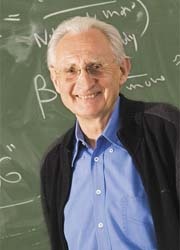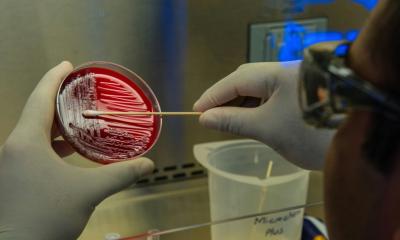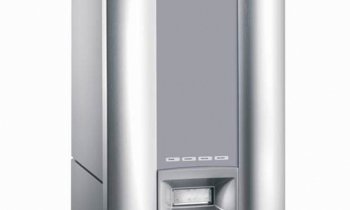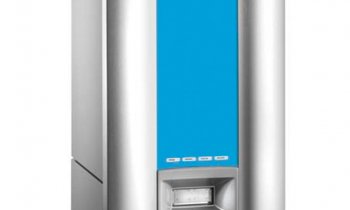Seeking life's chemical processes
Since the human genome was mapped 'systems biology' centres have sprung up all over Europe, including Bioquant in Heidelberg, Germany.

of 50 scientists and students at Heidelberg University. His many awards include the 1987 the Philip Morris Research Prize, 1993 Max Planck Research Prize; 1999 BMW Scientific Award, and the 2000 Polanyi Medal of the Royal Society of Chemistry
Systems biology is defined as the quantitative analysis of molecular and cellular biosystems, which involves experts in life sciences, mathematics, physics and chemistry. Their aim is to fully comprehend the complex and dynamic processes in a cell, or organ, and visualise them. This could take 10–20 years.
‘Systems biology is a hot topic in science,’ said Professor Jürgen Wolfrum of the Institute for Physical Chemistry at Heidelberg University and founding director of Bioquant, during an interview with Meike Lerner of European Hospital. When the human genome was mapped, scientists had access to all information on a molecular level for the first time, the professor explained. ‘With this knowledge we can now begin to study the elementary chemical processes of complex molecules – the building blocks of life – this means the entire complex system operating in a cell down to the accumulation of cells into tissue and organs. We want to understand and visualise these quantitative processes – a task that cannot be solved by one discipline alone; this needs joint efforts of all life sciences, chemistry, physics and mathematics.
‘Bioquant offers ideal conditions to tackle this problem. Even the building was designed to facilitate communication between the disciplines. Systems biology is a vast field. The Heidelberg working group will focus on virology and the cellular network. Our concept also encompasses a technology platform, primarily for high-resolution microscope diagnostics and digital image processing. We want to develop the technological foundation to observe complex cellular processes and communication between cells in vivo. We need diagnostic procedures that don’t interrupt or disturb those interactions. Light is best suited to achieve this – so, for example, we are working with laser microscopy on a nano scale. Another procedure – the single molecule technique - allows us to apply fluorescent markers to individual molecules then track them. Finally, there’s cryo-electron microscopy, in which frozen cells can be studied on a nano scale. We hope to apply these three methods simultaneously, so we can set off the weaknesses of each individual approach by the strengths of the others.’
The work should reveal how a virus can dock on to a cell, penetrate the membrane and use certain proteins inside the cell to proliferate. ‘We are particularly interested in finding out which proteins the virus needs and which genes activate those proteins. With the European Molecular Biology Laboratory (EMBL), we are building an ultra-fast high-throughput microscope to screen the genome and find out which genes are responsible for the proteins that help the virus. Then, one day, we might be able to stop the proliferation of the virus and thus the infection. The results of optical techniques are being combined with mathematical models. Both research approaches – screening the genome and building mathematical models – will yield enormous amounts of data that cannot be handled with normal memory capacities. So we’re supported by a high energy physics working group, specialised in processing large amounts of data – we are talking about petabyte, which means one million gigabyte.’
European congresses are now being organised to draw the separate systems biology centres together. ‘There is little danger of double work in research because the systems biology field is very wide,’ Prof Wolfrum reassured, adding that, in this complex, time-consuming research, exchanging results is important. ‘The more centres that work in this field, the faster we can put together the pieces of this puzzle. No doubt, the next few years will be thrilling and we’ll gain essential new insights into the functioning of our bodies’.
Funding
The federal state of Baden-Württemberg funds the research building.
The mathematical models projects at the Centre for Modelling and Simulation in Biosciences are funded by Heidelberg University, Klaus Tschira Foundation, EMBL, German Cancer Research Centre (DKFZ), Max Planck Society and the federal state of Baden-Württemberg.
Within the German National Excellence in Science initiative, Bioquant won the ‘Cellular Networks’ cluster (From molecular mechanisms to quantitative understanding of complex functions).
The Federal Ministry for Education and Research (BMBF) supports the Viroquant project under the systems biology initiative ForSys (Systems Biology of Virus-Cell Interactions).
The BMBF and DKFZ fund dSBCancer (System Biology of Signalling in Cancer).
Optical firms such as Leica, Nikon and Olympus, provide specialised microscopy equipment.
08.03.2007











